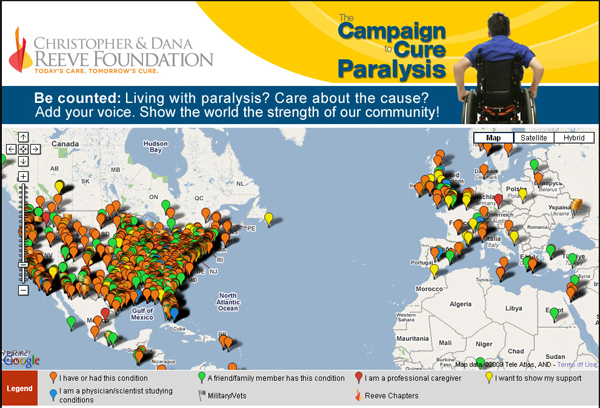Using Google Maps to Map Communities with Disabilities

Yesterday I received an email about a new project that the Reeve Foundation have undertaken.
In short, the Foundation are creating a Google Map that (literally) maps what the Foundation calls the Paralysis Community. This project invites people who have, or have had this condition, friends and family, professional carers, supporters and researchers to map themselves into a global community. This looks to be getting a positive response, and, like today’s Blogging Against Disablism Day, it is a strong example of the ways in which Web 2.0 technologies can be harnessed to influence our understandings of disability.
In creating visibility and connections between people, this map raises the profile of a distributed community; as well as allowing people to literally put themselves on the map and create a reflection of their shared experience as a node within a collaborative network. Due to the visual nature of Google Maps, it is difficult to create an effective alternative format for this kind of project, a reminder of the contrary nature of some media. Furthermore, I think it would be difficult for an organisation that was not a trusted charity to engineer a mass disclosure of data of this kind. But, that said, this appears to be a bold project – embracing the affordances of mapping tools and pushing them to create new and positive self-determinations.
If you’d like to take part in the Reeve Foundation’s efforts to highlight this community, visit their website here: http://campaigntocureparalysis.org/